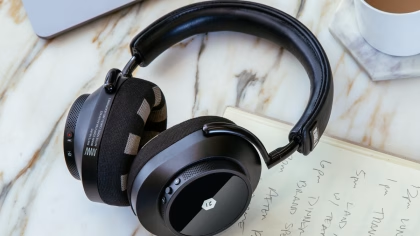Discover the ultimate guide to EEG headset prices in 2025. Compare costs, features, and options across all price ranges to find the best EEG device for your needs.
Table of Contents
Electroencephalography (EEG): A Century of Evolution and Modern Applications
Electroencephalography (EEG) has been around for over 100 years, starting as a specialized tool in psychology, medicine, and neuroscience. Today, its uses have expanded into areas like gaming, human-computer interaction, neuromarketing, and even simulation technologies. This evolution reflects its versatility and growing importance across various fields.
With the rising demand for high-quality EEG devices, many companies now offer solutions tailored to specific user needs. Whether it’s the number of channels, portability, predefined metrics, or price, there’s an option for everyone. Each brand brings something unique to the table, catering to different budgets and purposes.
When it comes to EEG devices, the old adage holds true: you get what you pay for. High-end EEG headsets, often used for research, are designed for maximum sensitivity and precision, boasting a larger number of sensors. However, these advanced features come with trade-offs, such as longer data collection and analysis times. Consulting experts can help you determine the best device for your specific goals.
What is an EEG Headset?
An EEG (Electroencephalogram) headset is a specialized device used to measure and record the brain’s electrical activity. By detecting the electrical signals generated by neurons, EEG headsets provide valuable insights into cognitive and neural processes, making them essential tools for a variety of applications.
How Does an EEG Headset Work?
The principle behind an EEG headset lies in the brain’s electrical communication. Neurons, the brain’s nerve cells, interact through electrical impulses. Electrodes in the headset, placed on the scalp, detect these faint signals, which are then amplified and processed into readable brainwave data.
Key Components of an EEG Headset
- Electrodes: Small sensors positioned on the scalp to capture electrical activity produced by the brain.
- Amplifier: Since brain signals are incredibly weak, the amplifier strengthens them for further analysis.
- Recording Device: This component stores or displays the amplified data, often integrating with computers, smartphones, or other hardware for real-time monitoring or later review.
Types of EEG Headsets
- Clinical EEG Headsets: Used in medical settings, these devices typically have a large number of electrodes to provide detailed brain activity data. They are commonly employed for diagnostic purposes, such as detecting seizures or monitoring brain disorders.
- Consumer EEG Headsets: Designed for the public, these headsets usually feature fewer electrodes and cater to more accessible applications, like meditation tracking, gaming, or general cognitive monitoring.
iMotions and EEG Headsets: A Perfect Pairing
iMotions, a leading biometric research platform, seamlessly integrates EEG headsets to unlock deeper insights into human emotions and behaviors. By combining EEG data with other physiological metrics, iMotions enables researchers to explore areas like cognitive workload, emotional engagement, and mental states. Whether for academic, clinical, or commercial use, iMotions and EEG technology together create a powerful tool for understanding the brain’s complex workings.
Top EEG Headsets: Compare Prices, Features & Best Picks
Making a choice between devices is of course best done with an expert at hand, and we are always available if you want to discuss your needs. Below you will find the price range of headsets from some of the leading manufacturers.
Affordable EEG Headsets: Top Picks Under $1,000

The lower end of this list also, unsurprisingly, starts with the lowest amount of electrodes. Companies like NeuroSky and Muse promise neurofeedback solutions to help improve meditation and sleep, although the research potential of such devices is ultimately limited by this.
Emotiv offers 5 and 14 channel solutions, with built-in metrics to enhance understanding of the respondent’s mental state. Currently, research with Emotiv comes with an additional cost-per-usage, which can add to the total price of use. Emotiv’s devices are also wireless, giving the possibility of more free movement to the respondent.
The OpenBCI device can be ordered as “print-it-yourself” – allowing you to 3D print the headset (and is also compatible with regular headcaps too). The organisation is committed to open-access and cost-effective solutions to EEG, giving expanded options for how to approach investigations of the brain.
- NeuroSky (1 channel)
- BrainLink Lite (1 channel)
- PLUX Biosignals EEG (1 channel)
- Muse (4 channels)
- Emotiv (pay-per-use + 5 or 14 channels)
- OpenBCI (8 – 16 channels)

Browse full range of EEG headsets
- EEG headsets from Neuroelectrics, ABM and Brain Products
- Get technical support and guidance in choosing the right equipment
- Full compatibility with iMotions for multimodal research
Mid-Range EEG Headsets: Best Options from $1,000 to $25,000

As we move up the price range, so too does the number of available electrodes for each device, and other perks to the hardware units. All of the systems within this range are research-grade, although the exact nature of your research will determine which unit is best for you.
Several of the companies (ABM, ANT Neuro, Cognionics, G.tec, mBrainTrain, Neuroelectrics, and Wearable Sensing) offer wireless solutions at this range, enabling data collection to occur with increased mobility (and increased comfort too). Additionally, the ability to collect EEG data without conductive gel is offered by ANT Neuro, Cognionics, G.tec, Neuroelectrics, and Wearable Sensing, meaning that the time to data collection is reduced.
There are a wide range of options at this price range, with up to 64 channels offered, partial or fully flexible systems, headcaps, and fixed units. In ABM’s case, the unit comes with well-researched and widely validated metrics that can provide quick and valuable insight into the cognitive function and mental state of the respondent.
The depth of information required, flexibility, and comfort of the respondent are all part of the equation that can be solved by these headsets, but of course individual needs will dictate the exact choice.
- Wearable Sensing (7 – 24 channels)
- Neurable MW75 (12 channels)
- ANT Neuro – eego rt / eego sports (8 – 32 channels)
- Neuroelectrics (8 – 32 channels)
- G.tec nautilus wireless / nautilus PRO wireless (8 – 64 channel)
- ABM B-Alert (10-24 channel)
- BioSemi (16 channel)
- Cognionics (20-30 channel)
- mBrainTrain (24 channel)
- Brain Products LiveAmp (32 channels)
Premium EEG Headsets: Top Choices Over $25,000

A huge number of electrode channels are available at this price range, starting at 32 with Brain Product’s ActiCHamp, and continuing up to 160, or even 256 channels with BioSemi. This quantity of electrodes allows an extremely high resolution when detecting brain signals.
ANT Neuro offers wireless solutions up to 64 channels, and can work without conductive gel up to 256 electrodes. At such a high density, the channel number can be split, allowing up to four mobile systems with 256 channels.
These systems represent the highest-grade EEG devices currently available, and a price tag inevitably comes with this. Again, the aims of your research or work may or may not require such a system – if you are unsure, it is always recommended to speak with colleagues in the field, other experts, or the manufacturers themselves in order to get the full picture about what exactly their systems offer.
- ANT Neuro – eego rt / eego sports (64 channels)
- ANT Neuro – eego mylab (32 – 256 channels)
- Brain Products ActiCHamp (32 – 160 channels)
- BioSemi (32 – 256 channels)
Let’s talk!
Schedule a free demo or get a quote to discover how our software and hardware solutions can support your research.
Frequently Asked Questions About EEG Headsets
Are EEG headsets safe to use?
Yes, EEG headsets are considered safe. These devices are non-invasive, meaning they simply measure electrical brain activity without emitting any radiation or electrical currents into the brain. Clinical EEG systems have been used safely for decades to diagnose and monitor neurological conditions. Consumer-grade EEG headsets are also safe when used according to the manufacturer’s instructions. To ensure safety, keep the device clean to avoid skin irritation or infection.
How accurate are EEG headsets?
The accuracy of EEG headsets depends on their type, quality, and intended use:
- Clinical-Grade EEG Systems: Found in medical settings, these devices are highly accurate, featuring many electrodes (32 or more) to capture detailed brain activity. Their use in controlled environments ensures precise recordings ideal for diagnosis or research.
- Consumer-Grade EEG Headsets: These are designed for more casual or accessible use. They usually have fewer electrodes and are more prone to interference from environmental factors, resulting in less precise readings. While valuable for general insights into brain activity, they may not match the accuracy of clinical systems.
Can EEG devices read thoughts or emotions?
EEG devices cannot “read” thoughts or emotions in a science fiction sense but can detect patterns linked to specific brain activity:
- Thoughts: EEG can identify patterns related to cognitive processes, such as attention or memory, but it cannot decipher the content of thoughts or translate them into images or words.
- Emotions: By analyzing brainwave frequencies, amplitudes, and regions of activity, EEG can identify patterns that align with certain emotional states like stress, relaxation, or excitement. When paired with other biometric tools, researchers can gain deeper insights into emotional responses to stimuli. However, pinpointing exact emotions using EEG alone is challenging and still under study.
In summary, EEG headsets are excellent for understanding brain functions and patterns but do not provide direct access to specific thoughts or emotions.
Free 59-page EEG Guide
For Beginners and Intermediates
- Get a thorough understanding of the essentials
- Valuable EEG research insight
- Learn how to take your research to the next level












